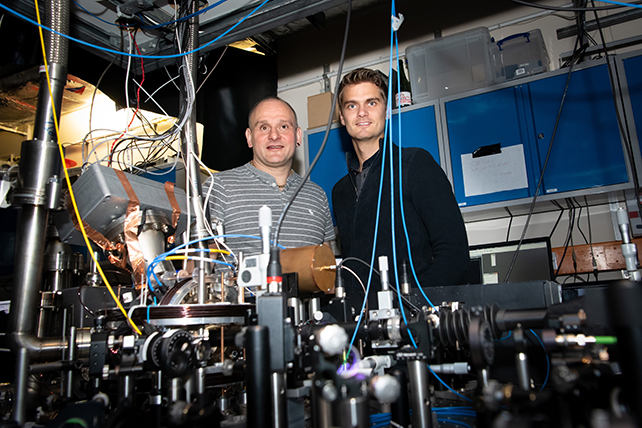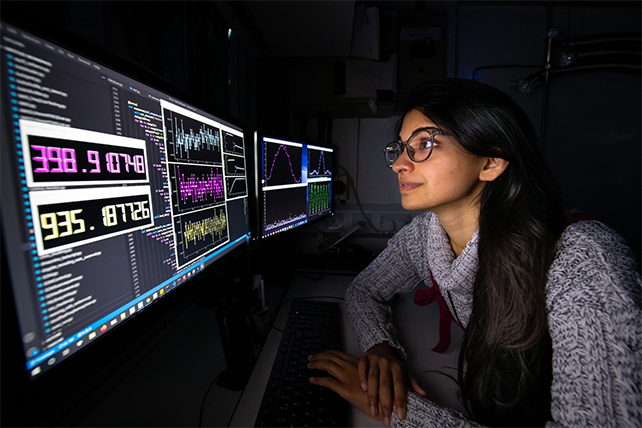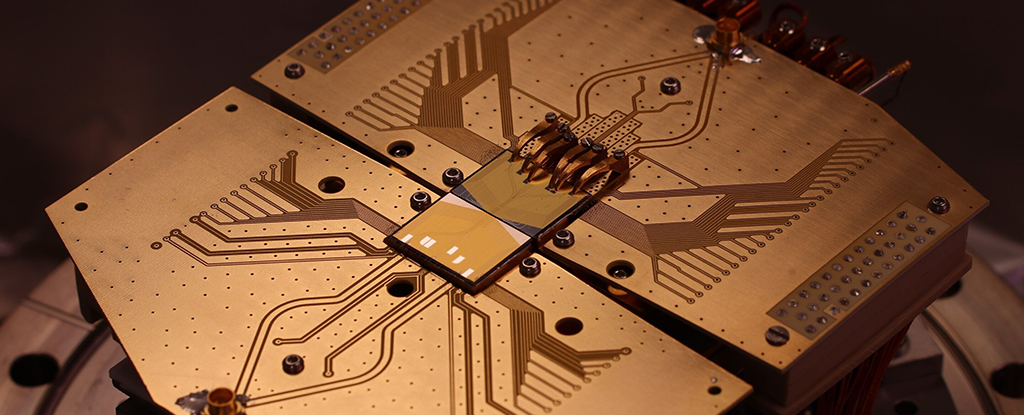Products You May Like
One of the challenges of reaching the full potential of quantum computing is figuring out how to get millions of qubits working together – those quantum equivalents of the classic bits that store 1s or 0s in traditional computers.
Scientists at the University of Sussex in the UK have now been able to get qubits traveling directly between two quantum computer microchips and at speeds and accuracies significantly above anything that’s been seen before with this technology.
That demonstrates that quantum computers can be scaled up beyond the physical confines of a microchip, a crucial factor when you’re potentially dealing with millions of qubits in the same machine. Universal Quantum, a startup spun out from the University of Sussex, will continue to develop the technology.

“The team has demonstrated fast and coherent ion transfer using quantum matter links,” says quantum scientist Mariam Akhtar. Akhtar led research on the prototype while she was at the University of Sussex.
“This experiment validates the unique architecture that Universal Quantum has been developing – providing an exciting route towards truly large-scale quantum computing.”
The researchers used a specialized technique they’re calling UQConnect to make the transfers, using an electric field setup to transport qubits. It means microchips could be slotted together in a similar way to jigsaw puzzle pieces to build quantum computers.

While qubits are notoriously hard to keep stable and shift around, the team hit a 99.999993 percent success rate and a connection rate of 2,424 links per second. There’s scope for having hundreds or even thousands of quantum computing microchips connected in this way, with minimal data or fidelity loss.
There’s more than one way to build a quantum microchip: In this case, the architecture used trapped atomic ions as the qubits for the best stability and reliability and charge-coupled device circuitry for superior electrical charge transfer.
“As quantum computers grow, we will eventually be constrained by the size of the microchip, which limits the number of quantum bits such a chip can accommodate,” says quantum scientist Winfried Hensinger from the University of Sussex.
“As such, we knew a modular approach was key to make quantum computers powerful enough to solve step-changing industry problems.”
The purposes that quantum computers could eventually be put to include developing new materials, research into drug treatments, cybersecurity improvements, and climate change models.
While quantum computers exist today, they’re limited in scope compared to what they could eventually become – they’re more research projects than machines that can be practically utilized and programmed.
Breakthroughs like the one we’ve reported on here are taking us towards fully realizing the potential of quantum computing, and developing ways to harness millions of qubits is a vital part of that.
“These exciting results show the remarkable potential of Universal Quantum’s quantum computers to become powerful enough to unlock the many life-changing applications of quantum computing,” says quantum scientist Sebastian Weidt from the University of Sussex.
The research has been published in Nature Communications.
